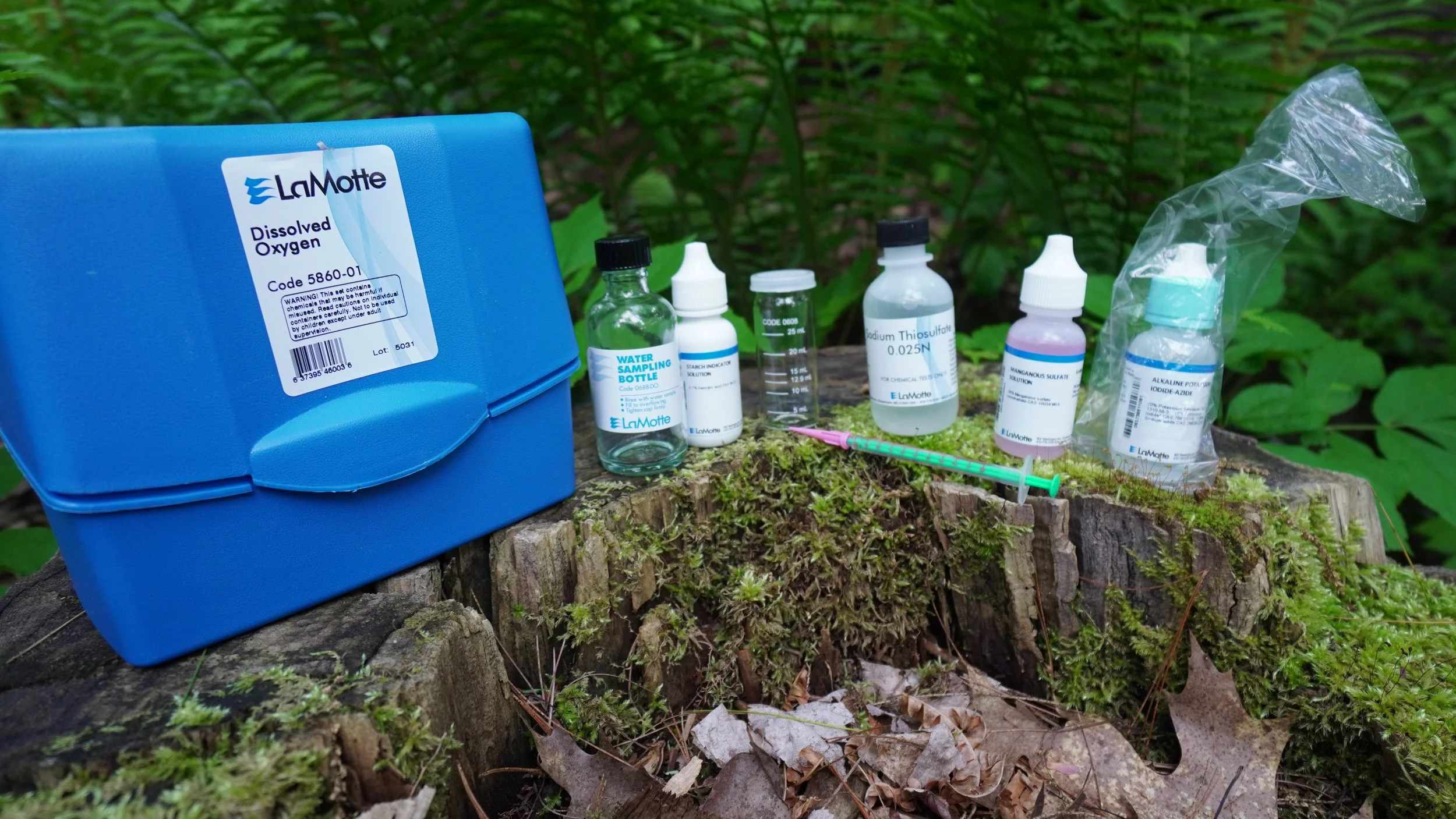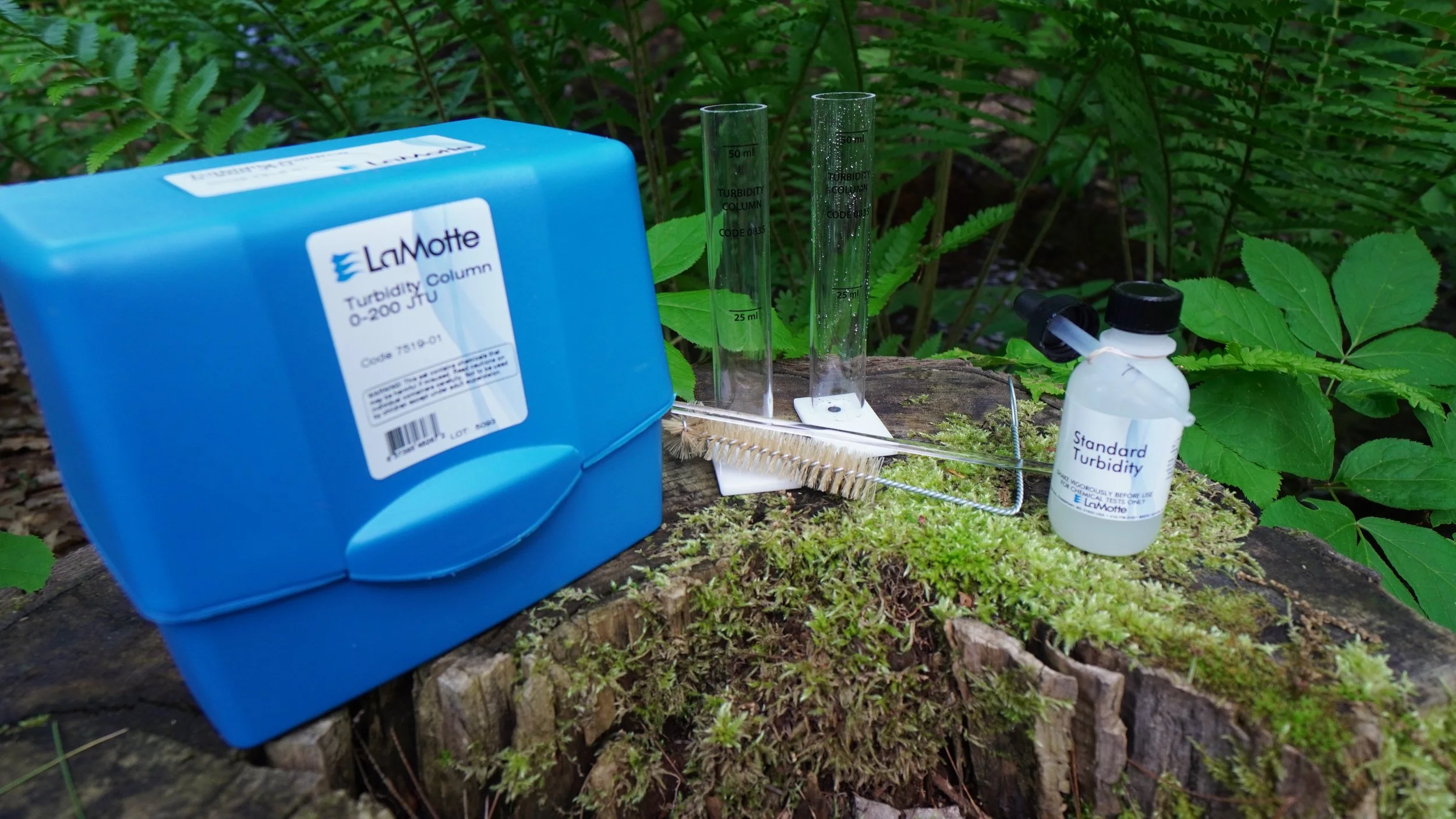
Data Downstream: An Expedition Tracking Hudson River Water Quality
Join me on a scientific journey as I paddle the length of the Hudson River, from its source to the sea near New York City. Data Downstream is where adventure meets data-driven discovery. As I navigate the river's currents, I will be collecting daily water quality measurements, offering a unique real-time perspective on the river's health. This page is dedicated to sharing that scientific story, highlighting the key metrics I will be tracking and what they tell us about the Hudson's water. Follow along as I uncover the science flowing just beneath the surface. Learn more about water science from the USGS Water Science School.
Below are the water quality tests methods that I will be using provided by LaMotte Company.
About the Science
Nitrate Nitrogen
What it is: Nitrate is a form of nitrogen that is essential for plant growth. While naturally occurring, high levels often come from human activities like agricultural runoff (fertilizers), wastewater, and septic systems.
Why it’s important to measure: Excessive nitrate acts as a nutrient pollutant. It can lead to rapid growth of algae and aquatic plants (eutrophication), which then die and decompose, consuming dissolved oxygen vital for fish and other aquatic life. High levels can also be harmful to humans and livestock if present in drinking water.
Learn more: LaMotte Catalog #3119-01
Silica
What it is: Silica (silicon dioxide) is a common mineral found naturally in rocks and soil. It dissolves into water as silicates.
Why it’s important to measure: Silica is an essential nutrient for diatoms, a major group of phytoplankton (microscopic algae) at the base of many aquatic food webs. Monitoring silica helps us understand the health and composition of the microscopic plant community, and can also indicate geological influences on the river’s chemistry.
Learn more: LaMotte Catalog #4463-01
Hardness
What it is: Water hardness refers to the concentration of dissolved mineral ions, primarily calcium and magnesium. Water with high concentrations is “hard,” while low concentrations indicate “soft” water.
Why it’s important to measure: Hardness affects how soap lathers, can cause mineral buildup (scaling) in pipes, and influences the toxicity of certain pollutants to aquatic life. Some aquatic organisms have specific hardness requirements for optimal health, as it can impact their osmotic balance.
Learn more: LaMotte Catalog #4824-DR-LT-01
Salinity
What it is: Salinity is the total concentration of dissolved salts in water, primarily sodium chloride. While freshwater has very low salinity, it becomes a crucial metric in estuaries like the lower Hudson where fresh and saltwater mix.
Why it’s important to measure: Salinity determines the types of organisms that can survive in a particular section of the river, as different species are adapted to specific salt concentrations. It also affects water density, which influences stratification and mixing patterns in the water column. Understanding salinity gradients is key to understanding estuarine ecosystems.
Learn more: LaMotte Catalog #7459-02
Phosphate
What it is: Phosphate is a form of phosphorus, another key nutrient required for plant growth. Like nitrates, it can enter waterways from agricultural runoff, industrial discharges, and detergents.
Why it’s important to measure: Phosphate is often the limiting nutrient in freshwater ecosystems, meaning even small increases can trigger significant algal blooms. These blooms reduce water clarity, consume oxygen as they decompose, and can produce toxins, impacting aquatic ecosystems and recreational uses.
Learn more: LaMotte Catalog #3119-01
Carbon Dioxide
What it is: Carbon dioxide is naturally present in water from atmospheric exchange, respiration by aquatic organisms, and decomposition of organic matter.
Why it’s important to measure: Carbon dioxide plays a key role in the water’s buffering capacity and its pH. High levels can make water more acidic, which can be stressful for some aquatic life. Conversely, aquatic plants use \text{CO}_2 for photosynthesis, and its levels can fluctuate throughout the day based on biological activity.
Learn more: LaMotte Catalog #7297-DR-01
Alkalinity
What it is: Alkalinity is the water’s capacity to neutralize acids (its buffering capacity). It’s primarily due to the presence of bicarbonates, carbonates, and hydroxides.
Why it’s important to measure: High alkalinity helps to stabilize the water’s pH, preventing drastic shifts that could harm aquatic life, especially important in areas prone to acid rain or acidic runoff. It’s a key indicator of a water body’s ability to resist acidification.
Learn more: LaMotte Catalog #4491-DR-01
Temperature
What it is: Water temperature is a fundamental physical property that directly influences many other water quality parameters and aquatic life.
Why it’s important to measure: Temperature affects the solubility of dissolved oxygen (cold water holds more \text{DO}). It influences the metabolic rates, growth, and reproduction of aquatic organisms. Extreme temperature changes can stress or kill fish and other wildlife. Temperature also affects the rates of chemical reactions and the toxicity of certain pollutants.
Learn more: LaMotte Catalog #1066
pH
What it is: pH measures how acidic or basic (alkaline) water is on a scale of 0 to 14, with 7 being neutral. Lower numbers indicate acidity, higher numbers indicate alkalinity.
Why it’s important to measure: The pH of water is crucial for the survival of aquatic organisms. Most aquatic life thrives within a specific pH range (typically 6.5 to 8.5). Extreme pH levels can stress or kill fish and invertebrates, alter nutrient availability, and affect the toxicity of pollutants.
Learn more: LaMotte Catalog #5858-01
Dissolved Oxygen
What it is: Dissolved oxygen (DO) is the amount of oxygen gas dissolved in water, essential for the respiration of aquatic animals like fish, invertebrates, and many microorganisms.
Why it’s important to measure: DO is one of the most critical indicators of water body health. Sufficient \text{DO} levels are necessary for fish and other aquatic organisms to survive. Low DO (hypoxia) can lead to fish kills, create “dead zones,” and promote the growth of anaerobic bacteria. \text{DO} levels are affected by temperature, depth, salinity, and biological activity.
Learn more: LaMotte Catalog #5860-01
Turbidity
What it is: Turbidity is a measure of the cloudiness or haziness of water caused by suspended particles that scatter light, such as silt, clay, organic matter, algae, and microorganisms.
Why it’s important to measure: High turbidity can reduce light penetration, inhibiting photosynthesis by aquatic plants and algae. It can also clog fish gills, reduce visibility for predators and prey, settle on the bottom suffocating eggs and invertebrates, and carry pollutants. It affects both ecosystem health and recreational aesthetics.
Learn more: LaMotte Catalog #7519-01






